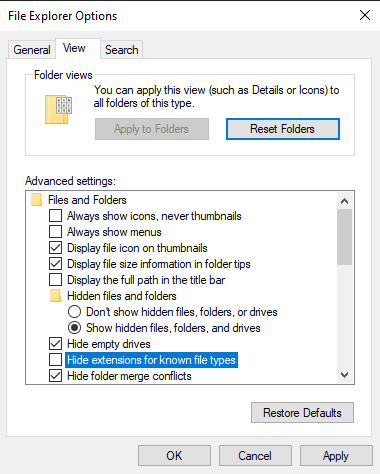Clarifications
Notes on UDK 2013 vs 2015
One frequently asked question is “why do we have to use UDK?” Rocket League was originally built with Unreal Engine 3 in UDK 2013, so that version had the fewest compatibility issues. In the years since then, improvements have been made and it’s no longer an issue to use UDK 2015.
Maps made with UDK 2015 cannot be opened in UDK 2013, but the reverse is not a problem at all. If everyone makes the switch to UDK 2015, then we will have world peace.
Unreal Engine 4
UDK is for Unreal Engine 3. Unreal Engine 4 was first released in 2014, and it’s almost a completely new engine. Unreal Engine 4 cannot be used for Rocket League Mapmaking.
File Extensions
 Don't not not hide
Don't not not hide
I highly recommend disabling the option to “Hide extensions for known file types” on Windows so that you actually know what files you are dealing with. Search for File Explorer Options in the Start Menu. Go to the View tab. Uncheck “Hide extensions for known file types.”
Or, always keep the “Type” column visible in your file explorer windows. You will have to frequently make changes to file extensions during this process, and it’s just a good thing to have enabled in general.
Editing Rocket League Maps
When Psyonix publishes a map, they perform an encryption step to protect the assets their artists worked hard to create. This means that it is not possible to directly open an existing Rocket League map. Decrypting most of these assets is possible, but location data is not preserved, meaning that you have to rebuild the map from its components.
EULA
Rocket League mapmaking techniques cannot be used to give you a competitive advantage in the game, and any attempts at that are directly against the EULA. Please play nice and play by the rules, and you have nothing to fear.